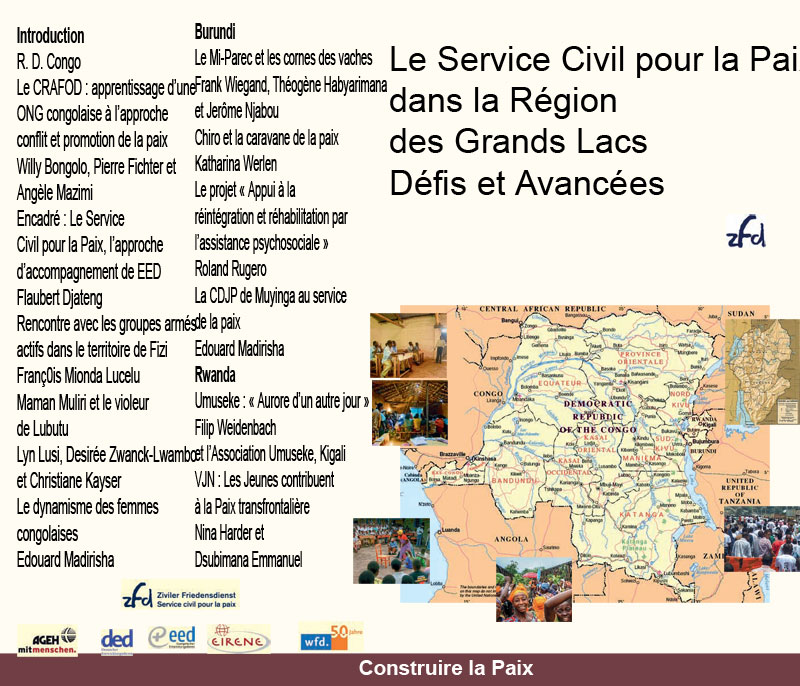
Les sociétés civiles en Afrique
septembre 27, 2017War vectors or actors of peace?
septembre 27, 2017Challenges and Advances
Introduction
The Civil Service for Peace (SCP – in German: Ziviler Friedensdienst / ZFD) was set up in 6888 by the German government at the request of among others German civil society. It is a human resources tool for partners in countries in conflict, post-conflict or destabilized situations to strengthen their capacity to contribute to a lasting peace. The German SCP operators work with their local partners in the countries and regions concerned. In the Great Lakes Region (DR Congo, Rwanda and Burundi) the program has existed since 7556 and the following German operators are working there:
- AGEH, Association for Development Assistance
- DED, German Development Service EED
- , Service of Evangelical Churches in Germany for Development
- EIRENE International
- WfD, International Service for Peace
Operators and their partners in the three countries are working with a wide range of approaches to achieving a common goal: stabilization and peace in the subregion. It is a work of peace:
- civil and non-military
- with grass-roots organizations and populations which facilitates dialogue between key actors (populations, state representatives, decision-makers, churches, the private sector, civilians, armed groups, the military, the police, etc.) which strengthens the capacities of local, national and sub-regional
- actors which accompanies advocacy at all levels
- which promotes subregional, inter-African and other exchanges and synergies.
In recent years, the SCP operators and partners in the Great Lakes Region have started together to strengthen their exchanges and to enhance their synergies as an important contribution to stabilization in a region that has suffered greatly from divisions and fragmentation. Through the articles of this publication you will discover the variety and richness of the different keys that make up an interesting and vibrant image. The articles are only a small snapshot of the various activities and effects of this work. For a more complete view, we refer you to the list of partner organizations on page b. We are pleased that this publication can contribute to making contact with all these peace actors on the ground. Your feedback is welcome.
Download the PDF file on this link



